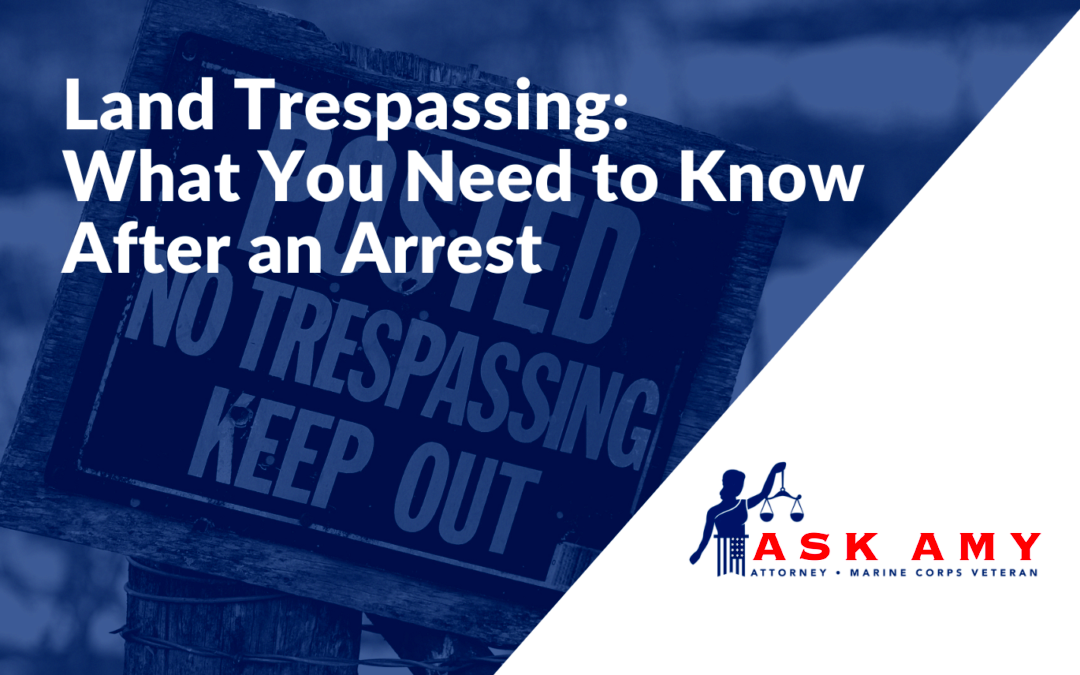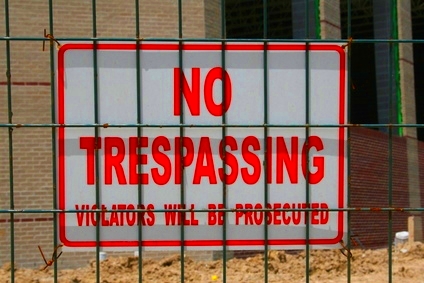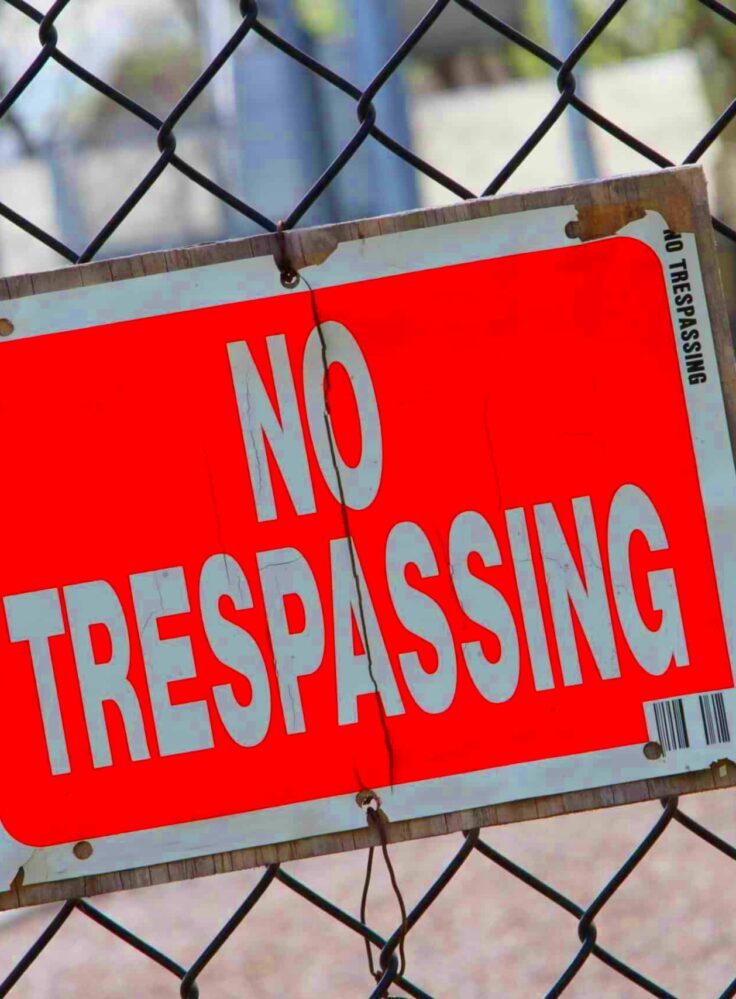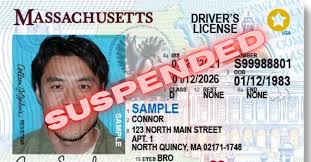What You Need to Know About Maryland Trespassing Laws
Maryland trespassing laws are designed to protect property rights and ensure that individuals respect the boundaries set by property owners. Trespassing occurs when someone enters or remains on another person’s property without permission. Understanding these laws is essential for both property owners and visitors to avoid legal issues. In this blog post, we will explore the key aspects of trespassing laws in Maryland, including definitions, types of offenses, and the potential consequences of violating these laws.
Definition of Trespassing in Maryland

In Maryland, trespassing is defined as entering or remaining on someone else’s property without consent. This can occur in various ways, such as:
- Physically entering the property
- Refusing to leave after being asked
- Entering a property that is clearly marked as private
Additionally, Maryland law recognizes the importance of property boundaries. Even if you do not intend to cause harm, entering someone’s property without permission can lead to legal consequences. It’s important to be aware of signs, fences, and other markers indicating private property.
Types of Trespassing Offenses

Maryland recognizes several types of trespassing offenses, which can vary in severity. Here are the main categories:
| Type of Offense | Description | Severity |
|---|---|---|
| Simple Trespass | Entering or remaining on property without permission. | misdemeanor |
| Aggravated Trespass | Entering with intent to commit a crime or causing harm. | felony |
| Trespassing in a Dwelling | Entering a home without permission. | felony |
| Trespass by Motor Vehicle | Using a vehicle to access private land. | misdemeanor |
Each type of offense carries different legal consequences, so it’s crucial to understand what constitutes trespassing to avoid potential legal issues.
Elements of a Trespassing Charge

To secure a trespassing conviction in Maryland, certain key elements must be established. Understanding these elements is important, whether you’re a property owner or someone accused of trespassing. Here’s what needs to be proven:
- Entry Without Permission: The individual must have entered the property without the owner’s consent.
- Knowledge: The accused must have known, or should have known, that they were entering private property.
- Intent: There should be an intention to remain on the property despite the lack of permission.
- Property Ownership: The property in question must belong to someone other than the trespasser.
If all these elements are proven, the individual can face legal repercussions. It’s important to note that even unintentional trespassing can lead to charges if the other elements are met. Therefore, being mindful of property boundaries is crucial.
Punishments for Trespassing in Maryland
The penalties for trespassing in Maryland can vary widely depending on the severity of the offense. Understanding the potential consequences is vital for anyone involved. Here’s a breakdown of the punishments:
| Type of Offense | Potential Punishment |
|---|---|
| Simple Trespass | Up to 90 days in jail and/or a fine of up to $500. |
| Aggravated Trespass | Up to 3 years in prison and/or a fine of up to $5,000. |
| Trespassing in a Dwelling | Up to 10 years in prison and/or a fine of up to $10,000. |
| Trespass by Motor Vehicle | Up to 1 year in jail and/or a fine of up to $1,000. |
As you can see, the consequences can be quite severe, especially for more serious offenses. Therefore, understanding the implications of trespassing laws is essential to avoid significant legal trouble.
Defenses Against Trespassing Charges
If you find yourself facing trespassing charges, it’s essential to know that there are potential defenses you can use. Here are some common defenses that may apply:
- Permission Granted: If you can prove that you had permission from the property owner, you may have a strong defense.
- Ambiguous Boundaries: If property lines are unclear and you genuinely believed you were on public land, this can be a valid defense.
- Emergency Situations: Entering someone’s property during an emergency to seek help can also serve as a defense.
- Insufficient Evidence: The prosecution must prove all elements of the trespassing charge. If they cannot, it may lead to a dismissal of the case.
Having a solid defense can significantly impact the outcome of a trespassing case. If you are accused of trespassing, it’s advisable to consult with a legal professional to understand your rights and options.
Importance of Property Signs
Property signs play a crucial role in trespassing laws in Maryland. They serve as clear indicators that an area is private and that entry without permission is prohibited. Having proper signage can help property owners protect their rights and reduce misunderstandings with visitors. Here’s why property signs are essential:
- Clear Communication: Signs communicate to potential trespassers that the property is off-limits. This can help prevent accidental trespassing.
- Legal Protection: Well-marked boundaries can strengthen a property owner’s legal position if they need to pursue trespassing charges.
- Deterrence: Visible signs may discourage unauthorized individuals from entering the property, reducing the likelihood of conflicts.
- Liability Reduction: Proper signage can help protect property owners from liability claims if someone gets injured while trespassing.
In Maryland, specific language is recommended for property signs to ensure they are legally effective. Including phrases like “No Trespassing” or “Private Property” can be beneficial. Ultimately, having clear and visible property signs is a simple yet effective way to assert one’s property rights and enhance safety.
Recent Changes in Trespassing Laws
Maryland has seen some recent changes in its trespassing laws aimed at clarifying existing statutes and addressing modern challenges. Understanding these changes is crucial for both property owners and potential trespassers. Here are a few key updates:
- Enhanced Penalties: Some offenses now carry harsher penalties, particularly those involving aggravated trespass, to deter repeat offenders.
- Increased Clarity: Legal definitions and distinctions between different types of trespassing have been refined, making it easier for law enforcement and the courts to interpret.
- Property Owner Rights: Recent legislation has strengthened the rights of property owners, making it clear that they have the right to defend their property against unauthorized entry.
- Public Awareness Campaigns: The state has initiated efforts to educate the public about property rights and the legal implications of trespassing.
These changes reflect a growing recognition of the importance of property rights in Maryland. Staying informed about these updates can help individuals navigate legal situations more effectively.
FAQ about Maryland Trespassing Laws
Many people have questions about trespassing laws in Maryland. Here are some frequently asked questions that can help clarify common concerns:
- What constitutes trespassing? Trespassing involves entering or remaining on someone else’s property without permission.
- Are there different levels of trespassing? Yes, there are simple trespassing and aggravated trespassing, with different legal implications for each.
- Can I be charged with trespassing if I didn’t know it was private property? You may still be charged if the other elements of the offense are met, but lack of knowledge can be a defense.
- What should I do if I receive a trespassing notice? It’s best to leave the property immediately and consult a legal professional if you have concerns about the notice.
- How can property owners protect themselves from trespassing? Posting clear signs, maintaining fences, and regularly monitoring their property can help deter trespassers.
Understanding these FAQs can help individuals navigate the complexities of Maryland’s trespassing laws and avoid potential legal issues.
Conclusion on Maryland Trespassing Laws
In summary, understanding Maryland trespassing laws is vital for both property owners and individuals visiting private properties. These laws aim to protect property rights while promoting respectful boundaries. Key elements such as the definition of trespassing, types of offenses, and the importance of property signs play significant roles in navigating this legal landscape. Recent changes in the law further emphasize the need for awareness and compliance, as they can impact both penalties and defenses. By staying informed and respecting property rights, individuals can help foster a safer and more respectful community. Always consult with legal professionals if you have specific concerns or questions about trespassing issues.


